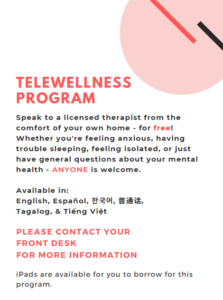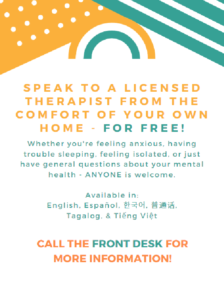PART V. DESIGNING AN OUTREACH AND RECRUITMENT PLAN
The Telewellness Program will connect underserved populations through telehealth and empower them with connected technology to increase digital social engagement with family, friends, community and necessary healthcare services through a train-the-trainer program. Ultimately, collaborations among key stakeholders will leverage previously uncoordinated efforts to bring about significant impact and sustainability. A Telewellness program should address one or more of these barriers in a comprehensive multi-modal approach that may consist of:
- installation of some sort of internet infrastructure in a community,
- provision of affordable internet service plan for all residents,
- provision of user-friendly hardware and software for each resident
- use of resident-specific training through a peer centered Train-the-Trainer program,
- conducting an evidence-based evaluation to assess reach, efficacy, adoption, engagement, and implementation, including health and mental health outcomes, and
- design for sustainability and rapid replicability.
This program will address the two largest barriers to telehealth implementation and operations in affordable housing: 1) having the right broadband tools (installation of Wi-Fi and proper technology) and 2) the proper training and education of end users that has a meaningful purpose, which is the organizing principle for a Telewellness Program. This includes implementing a culturally sensitive wellness program in the community. Although there are endless technology applications for low-income older adults (telehealth, voice devices, tablets, smart home, wearables), they’re only valuable when they provide the user with meaningful purpose. The Telewellness Program as well as curriculum thus includes the following elements:
- Multi-cultural requirements or services with cultural sensitivity for recruitment/outreach, training, and support
- Engagement and activation through education
- Digital inclusivity for all persons, with a focus on older adults and persons living with disabilities
- Older adult champions who promote the wellness program as a peer to fellow residents
- Training staff for behavioral health and technology basics
- Multi-lingual capabilities and a culturally aware adoption and support approach
A focus on trust and communication with an understanding that time and patience is essential to build adoption.






